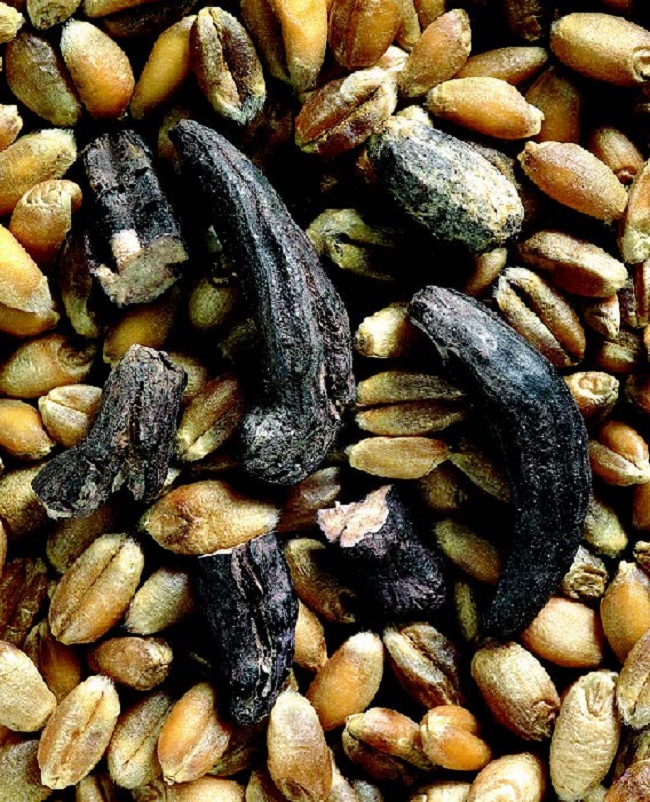- Home
- Knowledge library
- Determining the routes of transmission of ergot alkaloids in cereal grains
Determining the routes of transmission of ergot alkaloids in cereal grains
Summary
The fungus Claviceps purpurea infects cereals and grasses at anthesis, producing an ergot sclerotia (the overwintering structure of the pathogen) in place of a grain. Ergot sclerotia contain a cocktail of ergot alkaloids that are highly toxic to humans and animals. Evidence has emerged that ergot alkaloids could potentially find their way into the human food chain, presenting a potential risk to human health. This report addresses a number of questions regarding the potential risk for contamination of clean cereal grains with C. purpurea ergot alkaloids.
Significant differences were seen in the size and weight of mature ergot sclerotia produced by seven different C. purpurea isolates grown on wheat. Ergot sclerotia produced by isolate 04-97.1 varied in size and weight when grown on wheat, barley and rye. The ergot sclerotia produced on the spring wheat variety Mulika were significantly heavier than those produced on barley or rye, although this did not directly associate with larger sclerotia, as the sclerotia produced on wheat were not significantly different in size to those produced on barley.
Very low levels of ergot alkaloids were found in honeydew with all C. purpurea isolates tested. Levels increased in sphacelia tissues, reaching levels as high as 3 million parts per billion (3 million µg of ergot alkaloids per kg of sclerotia) in mature ergot sclerotia. While significant differences were seen in the profiles of the 12 ergot alkaloids screened, in all three fungal tissues, significant differences in the total levels of ergot alkaloids were only apparent in mature sclerotia. The cereal host had no significant effect on either the total ergot alkaloid levels or the alkaloid profiles of isolate 04-97.1.
In wheat and barley, and to a lesser extent in rye, ergot alkaloids were found to transfer to healthy grain that developed above and below flowers infected with the C. purpurea isolate 04-97.1. No significant differences in ergot alkaloid levels or profiles were seen between grain collected from above and below C. purpurea infected flowers. However, the profile of ergot alkaloids found on grain was very different from the profile found in mature ergot sclerotia of isolate 04-97.1.
Significantly more ergot alkaloids were transferred to clean grain of wheat and barley from direct physical contact with broken pieces of sclerotia, compared to intact sclerotia. Significant differences were seen between wheat and barley. At the lower concentration of ergot sclerotia (i.e. 0.5g) more ergot alkaloid was transferred to grain of wheat than barley, while at the higher sclerotia concentration (i.e. 5g) more alkaloid was transferred to barley grain.
C. purpurea has a very broad host range. Isolate 04-97.1 was originally collected from black-grass, a common grass weed found in standing cereal crops. The ability of one isolate to infect and produce ergot alkaloids in so many cereal crops, indicates the scale of the problem C. purpurea presents to cereal production and contamination of the human food chain with ergot alkaloids.
Also...
Read about contaminants monitoring in Crop Production Magazine.
An eye on visible and subtle threats (2023)
Ergot alkaloids under the spotlight (2018)
Monitoring of contaminants in UK cereals used for processing food and animal feed (2016)


